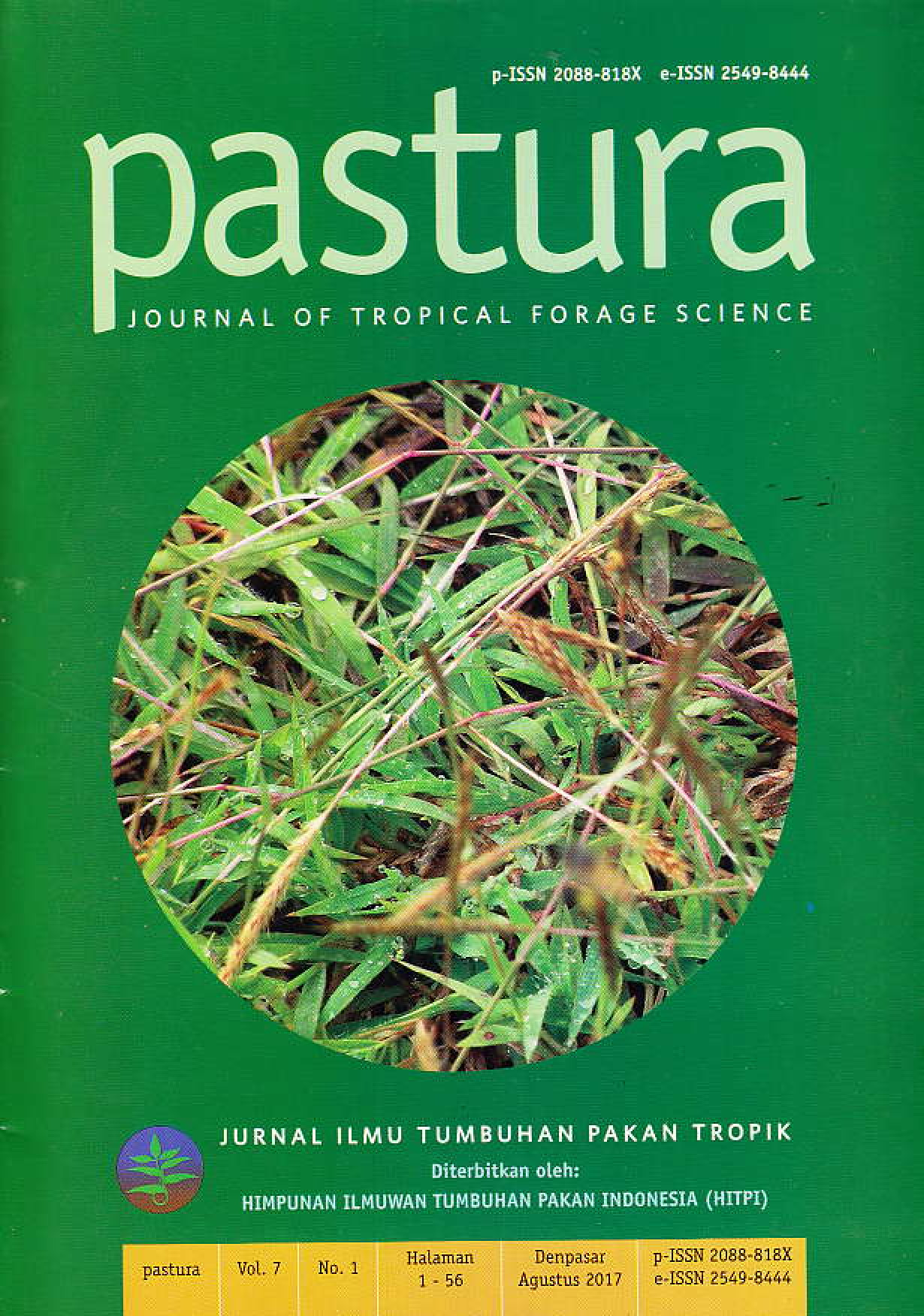PRODUKSI JAGUNG MANIS DAN KADAR MINERAL JERAMI PADA TIGA MUSIM TANAM DENGAN PEMUPUKAN PUKAN ‘PLUS’
Abstrak
Tujuan penelitian untuk mengetahui pengaruh pupuk kandang (pukan) “plus” terhadap hasil jagung manis dan kadar mineral jerami pada tiga musim tanaman (MT). Penelitian dengan rancangan acak lengkap, tujuh perlakuan dan empat ulangan selama 70 hari. Perlakuan hanya diberikan pada MT-I yaitu T0 (pukan), T1 (pukan+EM4), T2 (pukan+starTmik), T3 (pukan+stardec), T4 (pukan granular+EM4), T5 (pukan granular+starTmik), and T6 (pukan granular+stardec). Hasil penelitian menunjukkan bahwa pukan berpengaruh tidak nyata terhadap hasil jagung manis. Kadar Ca dan P jerami lebih tinggi dengan pukan diinokulasi biodekomposer dibanding tanpa biodekomposer.
Kata kunci: biodekomposer, pupuk kandang, fosfor, jerami, Zea mays saccharata
##plugins.generic.usageStats.downloads##
Authors who publish with this journal agree to the following terms:
- All articles published by Pastura Journal Of Tropical Forage Science are made available under an open access license worldwide immediately. This means everyone has free and unlimited access to the full-text of all articles published in Pastura Journal Of Tropical Forage Science, and everyone is free to re-use the published material given proper accreditation/citation of the original publication. Open access publication is supported by authors' institutes or research funding agency by payment of a comparatively article processing charge for accepted articles (See Author Fees). Pastura Journal Of Tropical Forage Science publish articles under the Creative Commons Attribution License.
- Authors are able to enter into separate, additional contractual arrangements for the non-exclusive distribution of the journal's published version of the work (e.g., post it to an institutional repository or publish it in a book), with an acknowledgement of its initial publication in this journal.
- Authors are permitted and encouraged to post their work online (e.g., in institutional repositories or on their website) prior to and during the submission process, as it can lead to productive exchanges, as well as earlier and greater citation of published work (SeeThe Effect of Open Access).





